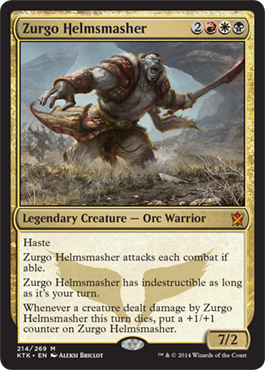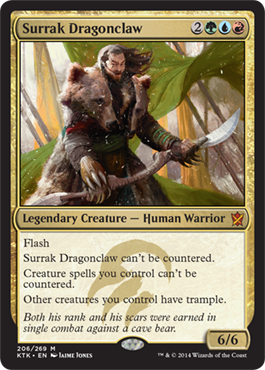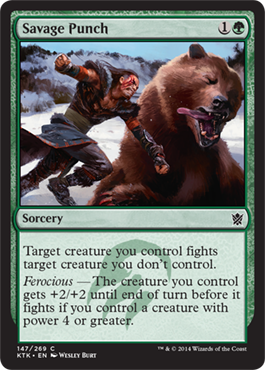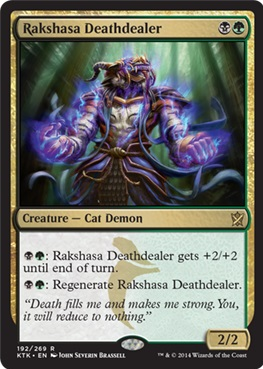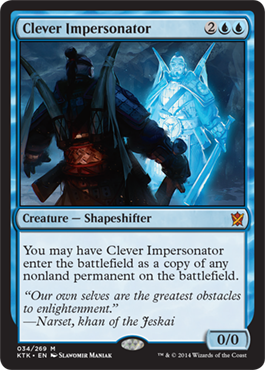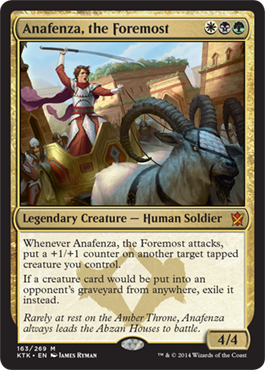Are you a Quiet Speculation member?
If not, now is a perfect time to join up! Our powerful tools, breaking-news analysis, and exclusive Discord channel will make sure you stay up to date and ahead of the curve.
Sylvain Lehoux - [MTGO] Update on Modern Positions
Sylvain addresses the daunting reality of long-term investments on MTGO, especially with the seasonality of formats and the threat of reprints. This week he defends the viability of these types of cards and attempts to define a long-term strategy for selecting targets.
With the release of VMA and the Vintage format being finally accessible to online players, every Modern card playable in Vintage, and also Legacy, got more than a nice boost and reached new records. It surely contributed to the Modern index breaking a new record high about two weeks ago.
If you were holding cards such as Thorn of Amethyst, Serum Powder, Golgari Grave-Troll, Infernal Tutor, Tezzeret the Seeker and Leyline of the Void you may have made some substantial profit. If you are still holding them you should seriously consider selling them now. These cards greatly benefited from the new interest for Vintage and have very limited or no interest in Modern; i.e. Golgari Grave-Troll is banned for instance and Infernal Tutor is pretty much unseen.
As for Modern staples only it seems that there are two different categories here--cards that have kept their up and down cycles independently of Modern PTQs being cancelled on MTGO, and cards that haven't really rebounded during the past 5-6 months.
Among the cards that have kept swinging with 50% or more variations: Serra Ascendant, Ranger of Eos, Fulminator Mage, Scapeshift and Inquisition of Kozilek.
Living End, Splinter Twin, Vengevine, Through the Breach, Kiki-Jiki, Mirror Breaker or Raging Ravine for instance haven't really rebounded and have been flat for a while now. They would be a good buying opportunity if we weren't few weeks away from Khans of Tarkir release on MTGO.
He goes on to explore the seasonal dip and outlines some positions to consider selling and holding. And quite a bit more, actually, including the ZEN fetchlands. Definitely check it out if you haven't.
>Read More...
Adam Yurchick - Khans of Tarkir Set Review - The Mardu Horde and Red
With the full spoiler of Khans of Tarkir released, we made a coordinated effort at QS to review the set, one color and wedge to individual writers. Just in time for the pre-release.
Adam Yurchick reviewed The Mardu Horde and the color red, as well as dipping into some Orzhov cards.
The Mardu Horde embodies the color Red, including all of its its impulsivity and chaos. The white side of the Mardu Horde adds elements of the Boros Legion, including it’s brutal efficiency and zeal for justice. The black side of the wedge adds elements of the Cult of Rakdos, including its bloodlust and thirst for power.
Mardu's keyword ability is Raid, which triggers if its controller attacked with a creature earlier that turn. Keyword abilities tend to be geared for limited play, but the most powerful of the bunch could appear in Standard.
Mardu features cheap, efficient creatures, many with haste. No card embodies the Mardu Horde more than its Khan, Zurgo Helmsmasher.
Zurgo Helmsmasher
Read on to learn what he thinks about this Legendary haster.
>Read More...
Sigmund Ausfresser - Khans of Tarkir Set Review - The Jeskai Way and Blue
Sigmund drew The Jeskai Way and the color blue, which just happened to be one of his favorite wedges from the set.
Sig always closes his articles out with his "Sigbits" segment, which I would like to share this week. This might give you some insight into his thought process if you haven't spent much time reading him yet:
Therefore I want to emphasize caution heading into Standard rotation. Khans of Tarkir cards will be available aplenty – wait patiently for prices to settle, targeting in trade only those Khans cards which demonstrate strength early in the season. Downward trajectories are common with newly released cards, and I see no Jeskai cards breaking this trend.
…
Sigbits
- To support Jeskai, one would potentially need to run Temple of Epiphany, a land I have been behind for a while now. The card is still on sale at SCG for $6.29 and it is still sold out. Expect a bump if UR comes together with success in Standard.
- Keranos, God of Storms is another one that could add power to a Jeskai deck. He, too, is sold out while on sale at SCG. The $17.99 sale price is likely to keep Keranos sold out until the sale’s end, when a more reasonable $19.99 price tag returns.
- On the flip side, the contrarian investor may be more interested in Ephara, God of the Polis. SP copies are on sale at SCG for $2.30, yet she is from the smaller Born of the Gods set and she may have a little synergy with Jeskai’s insistence on having creatures in play. I’m not buying here, but she probably can’t get much cheaper. Being a mythic rare god, any play would give her a healthy bump.
>Read More...
Danny Brown - Khans of Tarkir Set Review - Artifacts and Lands
Having his articles go live, Danny drew artifacts and lands for the Khans review, the most exciting color combination from this wedge set! Nonetheless, he got to cover some fascinating artifacts and perhaps the most financially relevant part of the set--the lands!
I wrote all about the fetch lands here, and I'm hardly the only one with an opinion on them. To summarize, I feel that:
- The art is significantly inferior to the Onslaught fetches.
- The preorder prices for these are far too high.
- We should look at what happened with shock lands before we go stockpiling fetches at their current high prices (or even after they drop a little bit).
- They are, however, a good place to hold value if you can trade Standard cards into them.
- The time to stockpile will come, you can be sure. These see a lot more play than shock lands.
He also went over the tri-color lands, which, of course, have relevancy. He predicts a buylist price for them, so check it out if you haven't!
>Read More...
Jason Alt - Khans of Tarkir Set Review - The Temur Frontier and Green
Jason's usual enthusiasm shines in the opening of his article:
I'm not the first to do my color-coded set review so you know how it goes by now.
I will say that I got the wedge I was most excited about doing. First of all, I'm a RUG EDH player and Temur has some goods that I can't wait to jam in 100 card decks. Also, "Temur" is the fifth stupidest-sounding name of all of the clans. All in all this is an exciting time for me, so let's get right down to it and talk about the financials this here set.
Surrak Dragonclaw
You don't want this guy as your Commander. I promise. I realize some of his abilities are good, and when they are on other creatures, sometimes you play them. I have Gaea's Herald in Nath and I have Spellbreaker Behemoth in Mayael. I understand.
And how does he end it?
Savage Punch
Some neckbeard is going to collect foils of this, I can already tell. Make him give you $2 each.
Just go read his article already. It's Jason. Not only will you learn something, you'll either chuckle or be upset. And it's good to be passionate about something.
>Read More...
Ryan Overturf - Khans of Tarkir Set Review – The Sultai Brood and Black
More Khans!
The graveyard as it exists today in Magic functions a lot differently than a mere pile of spent resources.
Many remark that dredge decks are nothing like the Magic that Richard Garfield designed, but I contend that they are simply an imminent outcome of complexity, and one that I welcome to the game. This is not to say that I’m a lover of dredge, but I approve of the deck more than most, largely because when the graveyard acts as a relevant resource, the game is more engaging for there are more things to consider with every decision.
Threshold was a mechanic that drove players to consider the number of cards in either player’s graveyard in a way that was not previously relevant, and Khans of Tarkir is bringing graveyard counts back in a big way. The Sultai Brood are bringing back (introducting?) the delve mechanic to Standard and allowing players to use their graveyard as an extension of their mana pools.
While the Sultai Brood do provide a graveyard emphasis, they bring significant power to the table in the more conventional sense as well.
Specifically, I expect the following card to be doing plenty of traditional beating down in the coming months.
Rakshasa Deathdealer
I’m not going to say that this is a better Putrid Leech, but I definitely like the card more. We’ll call them strictly different. Leech had the advantage of not requiring mana to pump, but the downsides of costing life as well as only being able to be activated once per turn. On top of the upsides that Raksasha Deathdealer has on the pump ability itself, it can also be regenerated.
>Read More...
David Schumann - The Legacy of Khans of Tarkir
David puts on his Legacy glasses and takes a look at Khans. He sets up a nice criteria for examining these cards, and the first card under the looking glass is none other than the hyped Clever Impersonator:
As always let's first define our the characteristics we look for when determining how Legacy-playable the cards are.
- Power -- In order for any card to see Legacy play it either needs to match or surpass the power of an existing card, or provide a completely unique effect.
- Converted Mana Cost -- The lower the better. While this is important in all formats, it is especially so in one as efficient as Legacy.
- Pitchable to Force? -- While this obviously isn't a deal breaker, blue cards should be scrutinized more simply because blue is the most powerful color.
- Similarity to Staples -- Does it do something similar to a card that already sees play?
Now that we've got that out of the way let's look at some of the interesting cards from Khans.
Clever Impersonator
- The power level on this card is very high. He does cost the same as a Jace, the Mind Sculptor, so in most cases why not just play JTMS instead? However, he can copy anything, making him extremely versatile.
- The CMC is again the exact same as JTMS. Four mana is quite a lot in Legacy so the card needs to do a lot to be worth it.
- He's blue so you can pitch him to FoW.
- This card is and isn't similar to other cards. We've had Phyrexian Metamorph available for a while and that one can copy creatures or artifacts for three mana (and two life), but the extra mana (and the fact that he's double blue) gives you a whole lot of versatility. The only sad thing is that like all clone effects he doesn't allow you to copy your opponent's permanent when brought into play via Show and Tell.
>Read More...
Corbin Hosler - Khans of Tarkir Set Review – The Abzan Houses
Since I know our writers, I randomly assigned Corbin his favorite wedge as well. Corbin likes to review the entire set, which he hasn't missed in four years. So expect a fully exhausted version from him soon. In the meantime:
Set review time! And as it works out, I get my favorite wedge to review, Abzan. Also known as “Junk” or green-white-black.
Why is it my favorite combination? I suppose it goes back to Knight of the Reliquary and the Legacy decks named “Junk” back in the day. Knight is one of my favorite cards ever, simply because I like the idea of doing cool stuff with your lands. I also play Karador, Ghost Chieftain in EDH, so there’s that.
Anyway, so let’s move on to what we’re looking at today. I’m going to walk through the major cards from this wedge and look at their possible place in Standard and eternal formats and what the implications of that could be. I’ll be back next week with my full set review, but this week I’ll be going a little more in-depth on individual cards instead.
Let’s get started.
Anafenza, the Foremost
For starters, this is sitting at $5 on TCGPlayer after some expected early volatility. And to be honest, I’m kind of unsure how to approach cards like this. It all comes down to how effective the mana will be, and since we’re working with scrylands and tri-lands as a major part of that, casting something like this on turn three will be pretty difficult. Not impossible, of course, but the question is twofold: How much damage are you going to deal yourself to cast this early, and how good is this if you don’t cast it on curve?
...
Of course I can't excerpt the entire article here, so you should continue reading on your own.
>Read More...
Mike Lanigan - Khans of Tarkir Top 10!
Ah, top ten lists! Something that is always up for debate, because you have Bloodsoaked Champion at 7 and I have it 5, so that makes us enemies.
Kidding, of course. Insider discourse is very cordial and professional, and Mike's article spawned a nice amount of discussion.
As one of the most clearly powerful cards in the set, Mike discusses Sarkhan:
Sarkhan, the Dragonspeaker is the same way. The difference between five and four mana is a lot but for that mana investment you are getting your money's worth for sure. Wizards has spent many years avoiding creatures as well as planeswalkers that kill creatures when they come into play. The fact that Sarkhan does just that is a big deal. There are creatures with higher than four toughness but the majority of what's out there can be defeated with Sarkhan's might.
Sarkhan has had strong reactions from both sides. Some claim he's overrated and Stormbreath Dragon is still the other way to go. Strong supporters of this new planeswalker think you should sell those Stormbreaths immediately because they are completely invalidated. Those on the fence are advocating for some combination of both cards.
Which cards do you agree with in his ordering?
>Read More...
Adam Yurchick - Cracking Khans of Tarkir Sealed Deck
Adam outlines how to effectively approach sealed deck, the pre-release format of choice:
When Vintage Masters hit Magic Online, I started playing a lot of sealed deck. So to help others in release events, I wrote a primer on sideboarding in sealed deck. In preparation for the Khans of Tarkir prerelease this weekend, I thought I’d share more sealed deck tips today. In honor of this multicolored set, I'll be focusing on the manabases.
The prerelease is a time for exploring the new cards in a very tactile way. It allows us to experience how these new cards function outside of the spoiler in the real, pragamatic context of a sealed deck tournament. Prereleases provide insight into how the cards actually work with one another. Building a sealed deck allows us to find synergies within our own cardpool, and by playing against opponents we see how these cards work within the context of an actual game. This interplay helps illuminate what the designers had in mind for a particular card’s function, and it provides the take-away of some insight into what role that card may play outside the microcosm of the prerelease and into constructed tournaments.
Personally, I haven’t been this excited for a prerelease in years. The set is full of fun, powerful cards that are sure to lead to many engaging, enlightening, and memorable games... and fetchlands!
Certainly this set will have some value, as the reprinting of the Onslaught fetchlands is the biggest Magic finance hype since the Power 9 hit Magic Online. These lands will send a shockwave through the Modern format, define Standard, and ensure a whole lot of Khans of Tarkir product will be opened.
I definitely made use of his guide and the resources at the end. Well timed, Adam.




